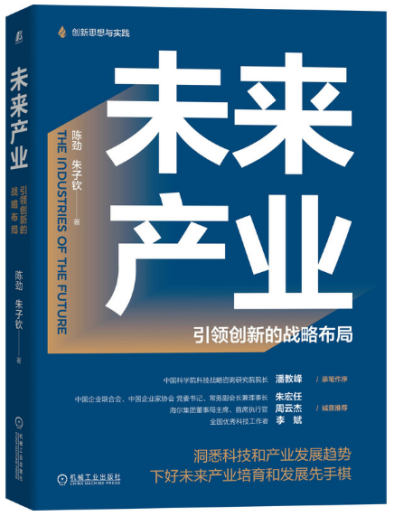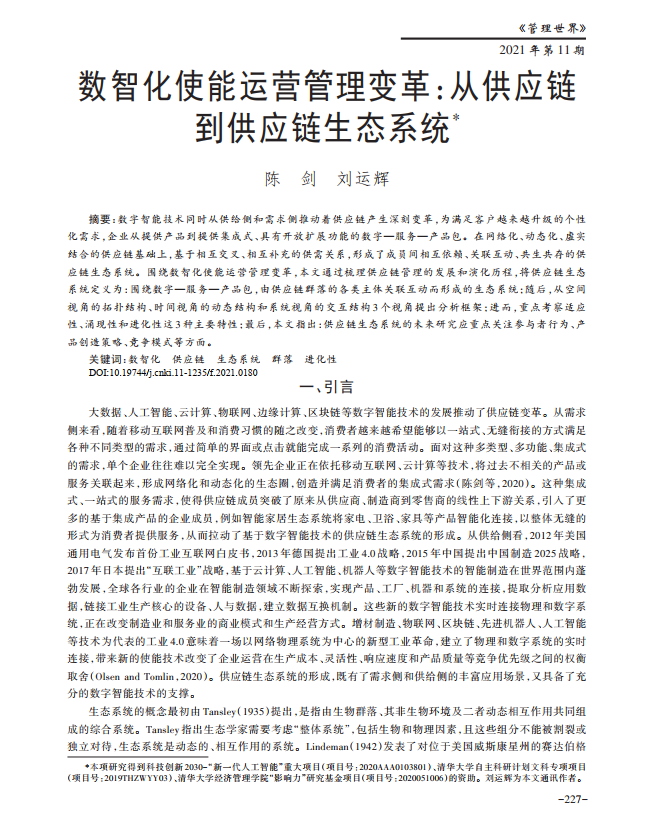Tsinghua University School of Economics and Management (Tsinghua SEM) won three second prizes for outstanding research outputs at the recent 17th Beijing Excellent Achievement Award in Philosophy and Social Sciences. The winning projects were the monograph Future Industries: Strategic Layout to Lead Innovation, co-authored by CHEN Jin and ZHU Ziqin; the academic paper Boosting Pension Enrollment and Household Consumption by Example: a Field Experiment on Information Provision, co-authored by BAI Chong-En, CHI Wei, and LIU Xiao; and the academic paper Digitized Empowerment of Operational Management Transformation: From Supply Chain to Supply Chain Ecosystem, co-authored by CHEN Jian and LIU Yunhui.
The Beijing Excellent Achievement Award in Philosophy and Social Science is announced every two years, with a grand prize, first prizes, and second prizes. This year, Tsinghua University won 20 awards - 4 first prizes and 16 second prizes.
A brief introduction to the award-winning research outputs

Future Industries: Strategic Layout to Lead Innovation by CHEN Jin and ZHU Ziqin
Future industries are those that emerge because of technological revolutions. The first part of this book elaborates on the historical background of future industries in China and around the world, explaining why future industries should be developed.
The second part takes a theoretical perspective to examine and deconstruct the significance of future industries from political, economic, cultural, social, ecological, and security dimensions, attempting to construct a theoretical framework for the development of such industries under the theoretical system of socialism with Chinese characteristics.
The third part is on tools. Based on an analysis of domestic and foreign practices, the authors propose a holistic approach to the layout of future industries, a methodology for planning and formulation, and a process for incubation with prominent Chinese characteristics.
The fourth part is on praxis. It systematically analyzes the roadmap of future industrial innovation and development from different parties, such as enterprises, research institutes, and governments, as well as different perspectives, including technology, talent, and funding.
Finally, the book proposes outlooks for the development of future industries, such as the future digital economy, future life and health, and future energy.
This monograph attributes equal significance to both theory and practice, domestic and international perspectives, foresight and mechanism, and methods and policies, aiming to help entrepreneurs, scholars, and researchers related to future industries to enhance their strategic management, foresight, and decision-making capabilities to promote industrial transformation and upgrading, and high-quality development of the national economy.

Boosting Pension Enrollment and Household Consumption by Example: A Field Experiment on Information Provision by BAI Chong-En, CHI Wei, and LIU Xiao.
This paper consists of six main parts. The introduction discusses the phenomenon of generally low participation in government welfare policies, and offers a literature review of the current methods and measures to improve the participation.
The second part systematically outlines China's basic pension insurance policies, including that for urban employees and that for urban and rural residents, and compares their similarities and differences in terms of applicable population, pension amount, and payment.
The third part uses economic theories to establish a net present value model for different time periods of residents participating in pension insurance policies. Through comparative static analysis, it explores how promotional brochures impact the participation rate for pension insurance, and examines whether different age groups react differently to information.
The fourth part outlines the specific experimental design, including the random grouping method, intervention measures for each experiment group, and experiment process.
The fifth part presents the results of experiments and reports on the impact of manuals with different content on the participation rates and effects. It also analyzes the impact of promotional content on residents' consumption.
Finally, the sixth part summarizes the research and discusses subsequent impacts and implementation measures.
Based on the results of experiments, this paper verifies that when conveying promotional information about welfare policies to the public, specific examples, comparisons of different benefit schemes, and personalized benefit information should be included to increase the possibility of participation in welfare policies. It also asserts that targeted promotion for specific groups can yield positive while reducing costs, promoting the participation of critical groups in social welfare policies such as pension insurance.

Digitized Empowerment of Operational Management Transformation: From Supply Chain to Supply Chain Ecosystem by CHEN Jian and LIU Yunhui
Digitization is driving profound changes in the supply chain from both the supply and demand sides. To meet the evolving and personalized needs of clients, enterprises are transforming from providing products to offering integrated digitization-service-product packages that are open for extension.
Based on a networked, dynamic, and virtual reality integrated supply chain, a supply chain ecosystem has formed, founded on interdependent and complementary supply and demand relationships in which members rely on each other and interact symbiotically.
Focusing on the digitized empowerment of operational management transformation, this paper reviews the development and evolution of supply chain management and defines the supply chain ecosystem as one centering on digitization-service-product packages, which is formed by the linkage and interaction of various entities in the supply chain community.
Next, the paper proposes an analytical framework from three perspectives: topological structure from a spatial perspective, dynamic structure from a temporal perspective, and interactive structure from a systemic perspective, with a special focus on examining the three main characteristics of adaptability, emergence, and evolution.
Finally, the paper states that future research on the supply chain ecosystem should focus on aspects such as participant behavior, product creation strategies, and competitive models.
 Latest News
Latest News